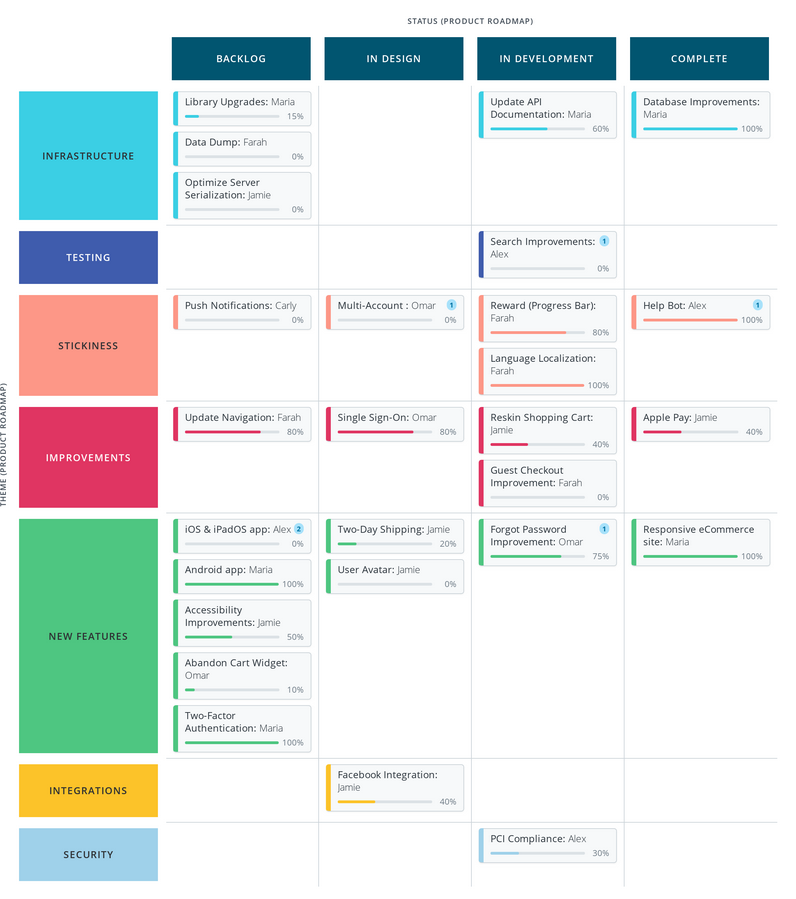When it comes to your project portfolio, sometimes less is more. Just like you’d clean out an overflowing closet or tidy up a messy desk, it’s wise to regularly evaluate your portfolio for any excess or disorder.
Think of “lean” as the Marie Kondo method of portfolio management. It’s all about decluttering, simplifying, and optimizing — but for your business instead of your sock drawer. Lean portfolio management (LPM) aims to create more customer value using fewer resources.
This mindset encourages managers to continually evaluate their portfolios by asking whether an item provides value. If not, it might be time to let it go.
What’s Lean portfolio management?
In portfolio management, “lean” refers to an approach that emphasizes delivering value to the customer, eliminating waste, and continuously improving processes. The philosophy originated in the manufacturing industry, specifically with the Toyota Production System. LPM is an approach that integrates Lean thinking into portfolio management to targets three primary areas:
- Alignment: Managers must connect the project portfolio roadmap with the overarching company strategy so every project within the portfolio directly supports the company’s strategic objectives.
- Balance: LPM involves balancing immediate business needs and long-term goals.
- Visibility: Stakeholders must be able to access relevant data and insights for informed and timely decision-making.
Business leaders use LPM to sync their organizational structure and vision with on-the-ground operations.
The 5 Lean principles
LPM is rooted in five core principles. Together, these elements emphasize creating value for the customer and promoting efficient processes:
- Prioritizing customer value: Delivering value requires understanding what a customer truly desires, whether it’s speedy delivery, top-notch quality, or a surprise freebie. It’s not merely about meeting basic requirements but also identifying and delivering aspects that exceed expectations.
- Mapping the value stream: Carefully outlining your processes uncovers wasteful activities and protocols you could streamline or automate. By mapping operations, you can identify non-value-adding tasks, potential bottlenecks, and redundant steps to eliminate or optimize.
- Creating flow: A strong workflow ensures processes run smoothly and reliably to avoid disruptions and hold-ups.
- Establishing pull: This principle contrasts traditional push-based systems where teams develop products and services in anticipation of demand. The pull principle advocates for producing only when there’s a clear customer need. This reduces inventory costs, minimizes waste, and ensures that products meet real-time market demands.
- Pursuing perfection: Striving for the highest quality encourages teams to constantly improve. This mindset nurtures a culture where groups seek opportunities to refine and enhance workflows and roadmaps.

When to use Lean portfolio management
Implementing LPM can benefit your team by helping you face challenges such as:
- Strategic alignment issues: If there’s a disconnect between an organization’s business strategy and its execution, LPM bridges this gap by ensuring that projects and initiatives support broader objectives.
- Transparency concerns: For organizations whose decision-making appears opaque or outcomes are unpredictable, LPM offers tools and frameworks that bring clarity and transparency to the decision-making process.
- History of project failures: Teams that regularly abandon projects or divert resources to initiatives that don’t resonate with the business’s core strategy can use LPM as an evaluative lens.
Benefits of Lean portfolio management
LPM introduces numerous benefits that can significantly enhance project success and organizational efficiency, like:
- Strategy alignment: LPM emphasizes aligning projects with the organization’s overarching goals, ensuring a unified direction and purpose in all initiatives.
- Resource optimization: If two projects compete for the same resources, LPM tools like value stream mapping and iterative project sprints help dictate allocation based on strategic priority and ROI.
- Risk mitigation: LPM involves identifying potential project risks and proactively addressing them. To aid these efforts, teams might regularly update a risk register with potential threats and mitigation strategies.
- Informed decision-making: Real-time data about all ongoing projects promotes strategic decision-making.
- Improved efficiency: LPM is grounded in the principle of continuous improvement, and it encourages teams to document and share best practices to boost overall efficiency.
- Increased value: The crux of LPM is value delivery. Teams ensure that chosen projects contribute maximum value to business goals and key stakeholders.
Drawbacks of Lean portfolio management
While traditional LPM is transformative for many teams, there are other specialized frameworks like SAFe Lean portfolio management (SAFe LPM) that organizations might prefer. SAFe LPM offers a structured approach for merging Lean principles with agile practices across an enterprise. Regardless of which system you choose, it’s crucial to acknowledge that one size might not fit all.
Here are a few common reasons some businesses hesitate to adopt LPM:
- Resource constraints: A successful LPM transition often requires additional training resources, relevant tools, and specialized roles. Not all organizations are in a position to make these investments.
- Entrenched legacy systems: For businesses deeply committed to existing systems and processes, shifting to a new framework can be daunting. The potential friction of integrating LPM with these systems might outweigh the perceived benefits.
- Size and scale considerations: LPM is often associated with managing complex portfolios, and for smaller enterprises with fewer projects or products, the setup and components might seem excessive or overly intricate.
5 critical elements of Lean portfolio management
With efficiency and customer value constantly front-of-mind, here are five critical elements of Lean portfolio management:
- Decentralized decision-making: Teams and individuals feel empowered to make critical decisions based on their expertise. Instead of the CEO making all decisions about product updates or development processes, every team and member shares their thoughts, which encourages staff to have more open discussions and brainstorming sessions.
- Value stream budgeting: Project managers allocate resources and budgets based on potential customer value, ensuring optimal use of funds. They also use historical data to predict which projects promise the best ROI.
- Feedback and continuous learning: Inviting, analyzing, and applying feedback helps make iterative improvements. Collection tools like UserVoice or SurveyMonkey can be instrumental in learning what went well and where there are improvement areas.
- Ongoing improvement: Teams embracing LPM constantly strive to enhance processes, outcomes, and methodologies. This fosters a culture of curiosity and innovation, where employees view mistakes as learning opportunities.
- Enterprise-wide alignment: Managers encourage teams to scrutinize every project or initiative to ensure it fits with the organization’s overarching objectives. And teams use strategic road-mapping tools such as Aha! or Roadmunk to showcase this alignment.

How to successfully implement Lean portfolio management
Successfully applying LMP takes collaboration and a clear vision for the organization. Include any relevant stakeholders in this six-step process to ensure implementation goes smoothly.
1. Create a blueprint for success
Begin by defining your organization’s mission, vision, and strategic objectives in clear, actionable terms. For instance, rather than just stating, “Be the industry leader,” you might specify, “Achieve 40% market share in the next three years.”
Use tools like Balanced Scorecards to align and measure strategic objectives. And regularly communicate these goals, ensuring every team member knows how their work impacts company targets.
Ask yourself, “How’s the flow of portfolio epics managed?” And if you identify any bottlenecks or inefficiencies, find ways to solve them.
2. Strategize to maximize
Prioritize initiatives that directly support strategic objectives, using frameworks like the weighted shortest job first (WSJF) to assess value versus effort.
Always be prepared to reevaluate priorities as market conditions or strategic goals change.
3. Promote synergy
Break down silos by creating cross-functional teams, merging skills from various departments to deliver complete value. Use collaboration tools like Slack or Microsoft Teams to maintain open communication lines and hold regular “sync-up” meetings to address potential roadblocks.
4. Ride the agile wave
Instead of funding specific projects, allocate budgets to value streams or product lines. Agile frameworks like Scrum or Kanban portfolios help you break initiatives into smaller, iterative chunks, while tools like Trello or Asana ease iteration management. Continuously gather feedback, adjust, and iterate to meet market demands.
5. Level up with learning
Ensure everyone, from top leadership to execution teams, understands Lean-agile principles, which are fundamental to agile portfolio management. This might involve sending teams to Lean or agile training sessions and workshops. Encourage internal “lunch and learn” sessions or knowledge-sharing workshops.
Staying updated with industry best practices and encouraging certifications like those from the SAFe drives innovation and commitment.
6. Uncover significant metrics
Establish key performance indicators (KPIs) that mirror deliverable value and process efficiency. Examples of KPIs might include “time to market” or “customer satisfaction scores.” And dedicate time for regular portfolio retrospectives to evaluate performance and seek improvement areas.
Lean portfolio management made easier with Roadmunk
Implementing portfolio management requires the best organization and collaboration tools — and Tempo delivers. Try Roadmunk by Tempo for audience-friendly roadmaps that outline the entire development process for every item in your portfolio. Paired with Jira-compatible Custom Charts and your team’s sure to meet every business goal.









